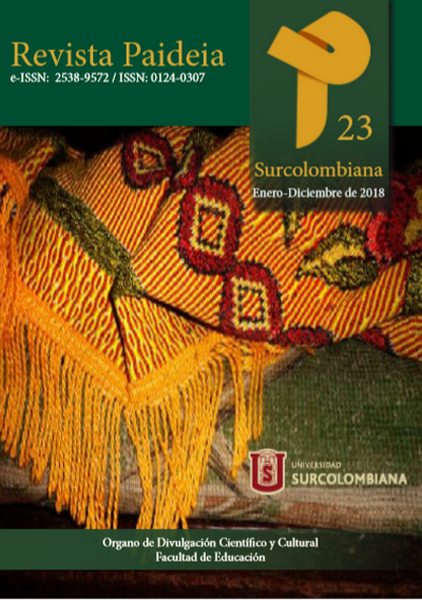Didactic unit as a pedagogical strategy for the strengthening of critical reading in eleventh grade students of the Alonso Carvajal Peralta educational institution
##plugins.themes.bootstrap3.article.main##
The research work arises from the need to strengthen the critical reading in the eleventh grade students, since after analyzing the results of the Saber tests it was identified that the reading levels of the students were not adequate. To do this, several inquiries were consulted concerning the aforementioned problems, which in turn served as a state of the art for the research process, with these master's and doctoral studies carried out at the national and international levels, respectively, it is worth noting that After conducting a comprehensive search at the regional level, no research was found that significantly contributed to the process.
The main objective was to promote critical reading in students, based on the basis of determining the level of reading (literal, inferential and critical) of students through a diagnostic test. Subsequently, a didactic unit was designed and implemented as an innovative pedagogical strategy, which, through its activities focused on meaningful learning, allowed the strengthening of critical reading. All of the above was framed in the methodology of action research with a qualitative approach because the whole process is self-reflective and inquires about the improvement opportunities for both the teacher and the student; It was also applied in a natural pedagogical context, yielding descriptive data and revealing social, cultural, pedagogical and didactic needs, among others.
Afterwards, it was possible to determine the reading level of each one of the students and the didactic unit, developed as a pedagogical strategy, was executed in its entirety and was liked by them. Finally, the progress of each of the students in the three reading levels was assessed by applying a final test.
Finally, it could be determined that the literal reading should be strengthened, with all that this implies, so that the other levels develop properly, bearing in mind that this strengthening must also be focused on the attitudinal and motivational part of the students.
Downloads
##plugins.themes.bootstrap3.article.details##
Cassany D. (2003). Aproximaciones a la lectura crítica: teoría, ejemplos y reflexiones. Tarbiya (32), p. 113-132. Recuperado de https://revistas.uam.es/tarbiya/article/viewFile/7275/7623.
Cassany D. (2006). Tras las líneas sobre la lectura contemporánea. Barcelona, España: Ed. Anagrama. Recuperado de https://bit.ly/2xRvDpU.
Cassany D y Castellá J. (2010). Aproximación a la literacidad crítica. Recuperado de: https://bit.ly/2FNMQz4.
Solé, I. (1992). Estrategias de lectura. Barcelona, España: Editorial Graò. Recuperado de https://bit.ly/2nn3pxs.














